
Gold Rush Still Haunts the San Francisco Bay
Past and Future of Antiprotons Celebrated During Golden Anniversary Symposium
Gold Rush Still Haunts the San Francisco Bay
More than 150 years ago, California’s Sierra Nevada foothills echoed with the jubilant cry: “There’s gold in them thar hills!” Today, those words have morphed into a more subdued but equally urgent warning: There’s mercury in the San Francisco Bay, and it isn’t going anywhere soon.

Photo by Roy Kaltschmidt
The lingering problem dates back to the Gold Rush, when miners used mercury by the wagonload to extract gold flecks from sediment. This toxic legacy is still finding its way into tributaries that feed the San Francisco Bay. How long it remains in the Bay once it arrives has been difficult to pin down, but an innovative new study indicates that it takes as long as 50 years for the Bay’s mercury concentrations to respond to changes in input.
“The good news is the San Francisco Bay is getting cleaner, the bad news is it will take a long time to flush mercury out of the system,” says Tom McKone, a staff scientist in Berkeley Lab’s Environmental Energy Technologies Division and an Adjunct Professor at UC Berkeley’s School of Public Health. He collaborated with former Berkeley Lab scientist Matthew MacLeod and Donald Mackay of Canada’s Trent University on the study, which appears in a recent issue of the journal Environmental Science & Technology.
“Our work also demonstrates that we have to live with the messes we make for a long time. It’s been 150 years since the Gold Rush, and we’re still paying for it,” says McKone.
For the past several years, McKone and colleagues have developed ways to model the ebb and flow of harmful chemicals such as PCBs and pesticides across large regions of North America. They track a chemical’s movement and accumulation by taking into account the chemical’s ability to reach equilibrium with a region’s soil, water, air, and vegetation. These chemical mass balance models allow the scientists to determine the extent to which a harmful chemical is absorbed into the environment, and how much is free to ride the winds and currents to other regions.
The team’s San Francisco Bay research began as part of a UC Berkeley Superfund Basic Research Program project to develop methods for reconstructing historical exposures to metals in estuaries. They turned their attention to mercury after meeting with scientists from the San Francisco Estuary Institute, which, along with several regulatory agencies, is working to understand and resolve this longstanding problem.
Mercury, however, is especially challenging to model because it readily converts between three different species, each of which reacts with the environment in a different way. There’s elemental mercury, which is the volatile liquid metal used by the 49’ers, who called it liquid silver. There’s salt-like divalent mercury. And there’s organic or methyl mercury, which is a potent neurotoxin that is known to be detrimental to developing fetuses and young children. It is passed from prey to predator along the food chain, which is why the California Office of Environmental Health Hazard Assessment issues fish consumption advisories for the San Francisco Bay.
“You can pick any part of the environment — water, air, and soil — and find all three mercury species in some kind of chemical balance,” says McKone.
Modeling these permutations in the San Francisco Bay area is even more difficult because the region represents the largest estuary on the West Coast, encompassing roughly 1,600 square miles of central California and draining almost one-half the land area of California. Complicating matters, the Bay is composed of a north and south estuary, with a huge flux of water moving through each system. Every year, an estimated 2,450 kilograms of sediment enter the Bay, some of which is deposited in the Bay, and some of which exits the Golden Gate.
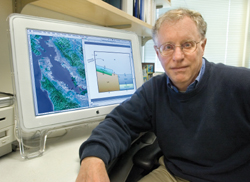 Tom McKone and his research partners studied how mercury used during the Gold Rush 150 years ago is still finding its way to San Francisco Bay
Tom McKone and his research partners studied how mercury used during the Gold Rush 150 years ago is still finding its way to San Francisco Bay
To track the behavior of this constantly changing toxin in a large and dynamic body of water, the team started with a mass balance model that accounts for how the three mercury species react with the region’s air, soil, vegetation, water, and sediment. Based on previous research, they also assumed that mercury exits the San Francisco Bay via the Golden Gate at a rate that is slower than its conversion rate between the three different species. This allowed them to assume a constant ratio between the three species in each type of environmental medium (air, soil, etc.).
They applied this model to the entire Bay Area, extending as far east as the Carquinez Straits, where the Sacramento and San Joaquin rivers empty into the Bay. The resulting mass balance calculations revealed that continental and global background levels of mercury are largely responsible for the Bay Area’s airborne mercury concentrations. But they found a much more localized source of mercury in the waters of the San Francisco Bay: contaminated sediments from long-ago mining activities. In addition, they determined that it takes decades for the Bay’s mercury concentrations to respond to changes.
“If we alter the amount of mercury that enters the Bay, it doesn’t reach a new equilibrium until about 50 years later,” says McKone. “We are learning that it takes a long time to clean up the Bay. Unfortunately, the upstream input of mercury is very large, and will remain large for a long time.”
That’s because California is littered with thousands of defunct mercury mines that date back to between 1850 and 1900, when miners used mercury-lined sluices to capture tiny grains of gold from sediment. Over the years, tailings from the mercury mines that supplied this process leached into the watershed, and eventually into the San Francisco Bay. These mines have been largely cleaned up and no longer pose a threat to the environment, but the mercury they released is still cycling through the sediment carried by the Sacramento and San Joaquin rivers.
“Gold mining was really hard on California’s environment, and the harm remains apparent even now,” says McKone. “But we are using the mistakes of the past to learn more about the life cycles of persistent chemicals in the Bay, and to learn how to protect the Bay for the future.”
Past and Future of Antiprotons Celebrated During Golden Anniversary Symposium
Approximately 160 scientists from across the nation and around the world came to Berkeley Lab on Oct. 28 and 29 to celebrate fifty years of antiprotons. The two-day symposium, held in the Building 50 Auditorium, drew speakers from several generations of particle physicists, whose talks spanned the discoveries of the antiproton and antineutron, the observations of antihydrogen and antineutrinos, and the current links between antiparticles and cosmology. Speakers also addressed the discoveries that are yet to come.
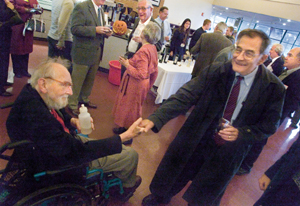
Owen Chamberlain, who shared the 1959 Nobel Prize in physics with Emilio Segr� for their having led the discovery in 1955 of the antiproton, greets former colleague George Trilling of the Physics Division. Chamberlain was the featured guest at �50 Years of Antiprotons, An Anniversary Symposium,� which was held at Berkeley Lab on Oct. 28 - 29.
Lab Director Steve Chu kicked the proceedings off with a story about how the Bevatron accelerator, which was used to discover the antiproton, had been designed specifically to enable experimentalists to create and see antiprotons. Laurie Brown of Northwestern University followed with a prehistory of the antiproton discovery, and then Berkeley Lab’s Edward Lofgren, the Bevatron’s first operations manager, told how the illustrious machine came to be built.
“All the major design choices of the Bevatron derived from admirable characteristics of Ernest Lawrence, who taught me to take chances, if necessary, but always have a way out, and William Brobeck, who taught me don’t fear to make it big or novel, but provide a way to fix it,” Lofgren said.
Berkeley Lab’s Herbert Steiner, who participated in the discovery as a graduate student, discussed the experiment led by Emilio Segrè, Owen Chamberlain, Clyde Wiegand and Tom Ypsilantis,that would win for Segrè and Chamberlain the 1959 Nobel Prize in physics. He concluded his comments with some advice to the new generation of physicists, including these tips: “Be in the right place at the right time, be lucky, have good collaborators, and have a lot of talented and dedicated people helping you.”
Berkeley Lab’s Gerson Goldhaber and Bill Wenzel completed the historical portion of the symposium with talks about how the antiproton was first observed, and the subsequent discovery of the antineutron, respectively.
Following a series of talks on various high energy physics experiments, the symposium concluded Saturday afternoon with a look into the future. Mark Trodden of Syracuse University, Jos Engelen of CERN, and Chris Quigg of Fermilab gave respective looks at searches for new particles and symmetries, upcoming experiments at the Large Hadron Collider (expected to begin in the summer of 2007), and the new worlds that await discovery.
In his New Worlds talk, Quigg praised Ernest Lawrence for his ability to raise money by “knowing how to put on a show.” He then put on his own show in which he posed questions such as why are there atoms and why are they neutral, called gravity “a chronic dull headache,” predicted an electroweak symmetry-breaking “agent provocateur,” and said the Higgs field will be found “whether it exists or not.”
Director Chu: My View
Finding The Keys to a Prosperous Future
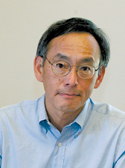
Each year, the senior management of the Laboratory has an off-site retreat to discuss over-arching issues facing the Lab. After extensive discussion at the Nov. 1-3 session in San Francisco, we concluded that the Lab must make significant changes in our culture and practices to ensure our continued prosperity. We cannot continue with “business as usual” and are preparing concrete plans.
We are, arguably, the best general-purpose laboratory of all national labs and a jewel in the research capability of America. The Laboratory is a world leader in science discovery and in the application of science for societal good. However, like much of American science and technology, there are unmistakable signs that the long-term prosperity of the Lab is at risk. For example:
- Lab spending has been virtually flat in real dollars since 2002. Roughly 85 percent of our DOE projects are now funded at less than $1 million.
- Core scientific and technical strengths, typically supported by block funding and large projects, are in danger of eroding.
- The number of Lab employees peaked in 1998-99 and has been declining ever since. Since 2002, the number of career employees has declined by about 180, while non-career employees and visitors have increased. Over 40 percent of our current workforce will reach the age of 60 over the next 10 years.
- From 2001 to 2005, the total overhead cost of labor per salary dollar has increased by 13 percent, largely due to increases in the cost of benefits.
- Unfunded mandates such as increased regulatory and reporting requirements from the DOE and the University of California continue to grow.
- Competition is growing. For example, SLAC is becoming a Basic Energy Sciences lab. The other general-purpose labs and top universities have become much stronger competitors.
- Non-DOE sources provide roughly one-quarter of the Lab budget, but DOE and Lab administrative hurdles to obtain “Work For Others” remain high.
Our situation is analogous to the proverbial frog and a pot of water. If the frog is suddenly thrown into hot water, it will jump out. However, if the frog is placed in a pot of slowly heating water, it will not sense the looming catastrophe and slowly boil to death.
All the retreat participants felt that the Lab has enormous strengths in our intellectual capital, in many facilities, in our heritage of team science and in the commitment of support staff. However, we are not taking full advantage of our potential. Collaborations that extend outside each Division are not as strong as they should be, and there is an opportunity to take better advantage of our enormous intellectual environment. We have not fully enlisted and integrated the operations and support staff into our scientific missions.
At the retreat, we established specific goals that we want to achieve in two years. They are:
- Revitalize the work force — We will attract some of the very best early-career scientists and support staff. Operations and support staff will be integrated and embedded into the research enterprise and feel they are of critical value to the mission of the Lab.
- 2. Channel our entrepreneurial energy toward more collaborative science — We will build stronger collaborations between scientists in different Lab divisions and intimate partnerships with UC campuses, industry and other national labs. Associate Laboratory Directors (ALDs) and division directors will be charged with facilitating cross-divisional and external scientific collaborations.
- Lower costs and increase efficiencies to become more scientifically competitive — Operations and support functions will be completely aligned with the needs of their customers. Scientific management and scientists will become more involved in understanding and setting priorities of the Lab’s operations and cost structures.
- Revitalize Lab’s infrastructure — We will build new buildings jointly with UC and renovate existing buildings to enable new science and to bring Lab employees now in downtown Berkeley and Oakland back to the hill. ALDs will assume the leadership role in optimizing space utilization.
- Make more transparent the roles and responsibilities of management
The retreat participants unanimously decided that these goals are so central and urgent to our future that the teams responsible for each of the five areas will continue to meet. An all-day follow-up session is scheduled for Sunday, Dec. 4. We will keep the Lab community informed as plans are made more concrete.
We ask that all Lab employees join us in our efforts to take the Lab to new heights in our science and in the application of science for the benefit of humanity. A collective will to succeed is essential if we are to secure a prosperous future.
Be They Sprinters, Joggers or Walkers, Hundreds Turn Out For Runaround
Top Women’s Runner -- Justine Owen 13:16.6
Top Men’s Runner -- Dula Parkinson 9:36.7

Will the Winning Streak Continue?
When Dula Parkinson crossed the finish line at this year’s Runaround, he became the first person in the race’s 27-year history to win the event four times. The only person who comes close to matching his legacy is Sarah Tabutt, who was the first woman to cross the finish line from 1982 to 1985 and who holds the women’s course record at 10:24.
But will there be a fifth win? Maybe, maybe not. Parkinson is a UC Berkeley graduate student and Physical Biosciences Division scientist who works in Deputy Director Graham Fleming’s (what else?) ultrafast spectroscopy lab. He graduates in May.
“And I’m not quite sure where I’m headed after that,” he says.
That could be good news for anyone hoping to hoist the winner’s trophy in the future. Parkinson has won every Runaround he has entered, the first one in 2002 one year after graduating from Utah’s Brigham Young University where he ran track and cross country. His events were the 10 K and the mile, the latter of which prepared him well for the Runaround’s fast and hilly 1.86-mile course.
He still runs five or six miles a day, and he trains specifically for the Runaround by running laps on a quarter-mile track in the weeks preceding the race. But despite his recent dominance of a fun race that a few people take quite seriously, Parkinson doesn’t hold the course record, which is a blazing 8:46 set by Gerry Harnett way back in 1981.
“I’ve thought about beating the record a lot,” says Parkinson. “My fastest time is about 30 seconds slower, so to beat that I would have to train even harder and get lucky.”
Parkinson has even Googled Harnett’s name to check out the competition, which, as it turns out, is pretty tough. Harnett was an NCAA All-American runner at Pomona College in 1978. Parkinson isn’t obsessed with breaking the record, however.
“I don’t run many other races these days. I had my glory days back in college,” he says.
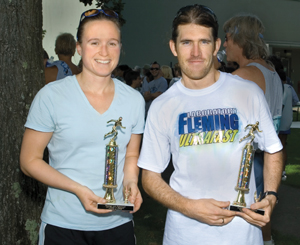
Parkinson, right, with women's winner Justine Owen
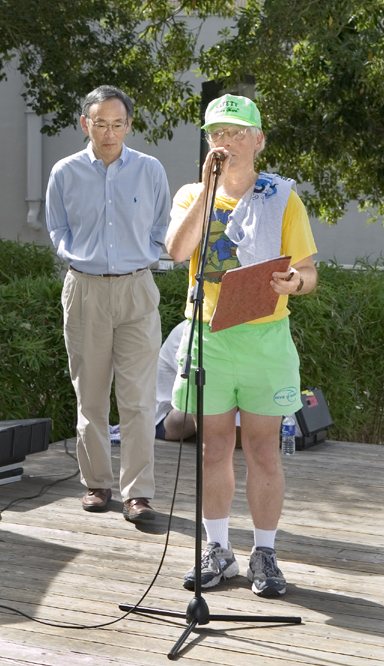
Steve Chu listens as Runaround organizer Steve Derenzo announces the
winners of the race on a stage near the cafeteria.
Runaround 2005
For 28 years in a row, the Lab has sponsored the Runaround, a race that takes employees on a course up, down and around the Hill. At this year’s Oct. 14 race, 640 staff members hit the pavement, while others rode the course on bicycles. The annual success of the event relies on numerous staff who volunteer their time, so a special thanks to them. Below is a list of the top 20 runners and their times.
1. 9:36.7 Dula Parkinson
2. 10:23.7 Stephen Fairclough
3. 10:51.8 Andreu Cabot
4. 11:18.2 Rory Waterman
5. 11:22.4 Mike Scarpulla
6. 11:26.3 Seiji Nakagawa
7. 11:27.8 Derek Yegian
8. 11:32.2 Patrick Bazinet
9. 11:44.9 Brett Singer
10. 11:46.1 Damon Todd
11. 11:50.9 Ryan Miyakawa
12. 11:57.4 Owen Bailey
13. 12:00.7 Gregory Portman
14. 12:04.2 Markus Oldenburg
15. 12:12.1 Jeremy Robinson
16. 12:17.9 William Hong
17. 12:28.5 Dan Krotz
18. 12:35.8 Chris Anderson
19. 12:39.0 Donatas Zigmatas
20. 12:40.2 Marc Fischer
For a full list of participants and times, go to http://cfi.lbl.gov/ ~derenzo/runaround/
Intact Ribosome Imaged at Highest Resolution Ever at Advanced Light Source
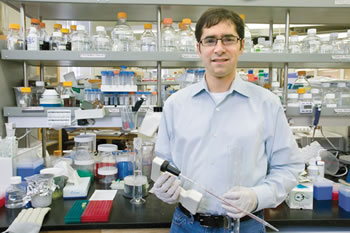 Jamie Cate of the Physical Biosciences Division.
Jamie Cate of the Physical Biosciences Division.
Using beamlines 8.3.1 and 12.3.1 (SIBYLS) at the Advanced Light Source, Jamie Cate of the Physical Biosciences Division and his colleagues have determined the structures of Escherichia coli ribosomes — in two different configurations — to a resolution of 3.5 angstroms, the highest resolution ever achieved for the intact ribosome. (An angstrom is a ten-billionth of a meter, shorter than a chemical bond.)
Ribosomes are organelles made of two-thirds RNA and one-third proteins, used by all cells to create proteins specified by the genetic code. Despite some differences, the ribosomes of everything from single-celled bacteria to multicellular animals, including humans, are remarkably similar.
“Comparing our structures with each other and with other models allows us to predict how the ribosome translates chemical energy into mechanical motion,” says Cate, also an assistant chemistry and biology professor at UC Berkeley. His team discovered crucial details of how the ribosome’s machinery builds proteins from amino acids.
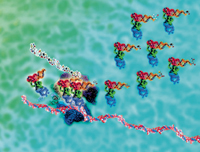 In this schematic view, the intact ribosome at lower left reads messenger RNA (long strand at bottom) to synthesize a protein (the strand growing from the top of the ribosome). The protein is made step by step as the ribosome causes peptide bonds to form between amino acids brought by the transfer RNAs (upper right).
In this schematic view, the intact ribosome at lower left reads messenger RNA (long strand at bottom) to synthesize a protein (the strand growing from the top of the ribosome). The protein is made step by step as the ribosome causes peptide bonds to form between amino acids brought by the transfer RNAs (upper right).
The ribosome’s two subunits, large and small, roam separately until a small subunit encounters a length of messenger RNA (mRNA) and moves along it to find a start signal. The small subunit then binds the first of many transfer RNAs (tRNAs) needed to build the protein. Proteins are made from just 20 kinds of amino acid; one or more tRNAs are specific to each and carry them to the ribosome.
The large subunit joins the small and they sandwich the tRNA between them. Each new tRNA binds to a site labeled A (for “amino acid”), then moves to a site called P (for “peptide-forming”), where a peptide bond forms between the already-built string and the new amino acid.
Once its amino acid is attached, a tRNA moves to site E (for “exit”) and is released. The ribosome moves along, reading the mRNA; the cycle repeats, shuttling tRNAs from the amino-acid site to the peptide-forming site to the exit, while the protein elongates one amino acid at a time. Finally the small subunit encounters the mRNA stop signal; the completed protein is freed and the subunits part and go their separate ways.
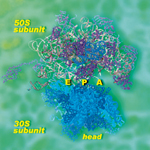
The structure of the intact ribosome of Escherichia coli has been resolved to 3.5 angstroms, allowing researchers to see how the large 50S subunit and the small 30S subunit work together. The new structure reveals how the ribosome's "head" moves while making proteins specified by messenger RNA, by shuttling transfer RNAs from site A to site P to site E inside the ribosome.
The high resolution obtained by Cate and his colleagues revealed startling details. The small subunit is particularly complex, with a head, neck, and other features, the head especially active. The researchers discovered three helical RNA “tension springs” in the neck, which guide the head as it moves mRNA and tRNA through the mechanism. They also discovered that the gap between the subunits is filled with salt water, which may act as a kind of lubricant by neutralizing their high charge.
Comparing their high-resolution structures with x-ray crystallography and electron microscopy conformations of other ribosomes from bacteria, yeast, and mammals, the Cate team assembled “global snapshots” allowing them to deduce how individual parts function during protein-building.
They learned that once a tRNA attaches to the growing peptide chain, the small subunit ratchets backwards to move the assembly line of mRNA and tRNAs forward. The head swivels and opens a groove that unlocks the tRNAs and mRNA. The small subunit then reverses its motions, resets, and is ready to bind the next tRNA.
In the future, “we would really like to be able to see the bound elongation factors as they move the tRNAs through the ribosome,” Cate says. This and other goals will require capturing complexes of ribosomes, mRNAs and tRNAs, elongation factors, and other molecules together in one crystalline form, a challenge Cate is eager to take on.
“Structures of the bacterial ribosome at 3.5 Å resolution,” by Barbara Schuwirth, Maria Borovinskaya, Cathy Hau, Wen Zhang, Antón Vila-Sanjurjo, James Holton, and Jamie Doudna Cate, appears in the November 4 issue of Science.
Lab�s Exiting Employees Provide Feedback
Berkeley Lab employees are satisfied with their experience at the Lab, according to a recent analysis of nearly 800 exit questionnaires completed by people who left the Lab between 2000 and 2004.
The questionnaire asked people who left the Lab for several reasons — including resignation, retirement, layoff, and the end of an appointment — to voluntarily rate 28 types of experiences at the Lab, from peer relationships to quality of supervision to career development.
“Overall, people rate working at the Lab highly, and this is true for both staff and post-doc populations,” says Mary Gilles, the Chemical Sciences Division representative to the Lab’s Best Practices Diversity Council (BPDC) who initiated and conducted much of the exit interview analysis. She was assisted by Penny Huang, a sociologist with the Lab’s Workforce Diversity Office.
Approximately 70 percent of the respondents rated most items as satisfactory or somewhat satisfactory. In addition, about 80 percent rated employees’ services, quality and style of supervision, and the physical conditions of their jobs as satisfactory. More than 90 percent rated their relationship with peers as satisfactory, and approximately 90 percent rated their relationship with their supervisor as satisfactory.
Less than 50 percent of the respondents rated communication within the Lab as satisfactory. Communication was defined as the process by which employees are informed of activities and changes within their department, division, and the Lab. Opportunities for advancement also received lower scores.
Staff members expressed less satisfaction with their experiences at the Lab than did students and postdoctoral fellows. “Due to the transient nature of student and post-doc positions, they may be less likely to have strong feelings about issues that may be more relevant to staff members,” says Gilles.
Non minorities in the survey were less satisfied with their supervision and the recognition they receive for achievements than their minority counterparts. In addition, women were generally less satisfied in areas such as relationships with peers and coworkers, challenge of work assignments, salary, and equal opportunity.
While the exit-interview analysis is informative in its own right, Gilles, Huang and the BPDC believe it is important to gauge employees’ work-related experiences while they are still employed at the Lab. Laboratory management agrees. Based on the usefulness of the exit interview analysis, the Lab Directorate plans to issue a Lab-wide survey to all employees by early next year. This voluntary, online questionnaire, which is supported and endorsed by BPDC, will allow employees to provide confidential feedback to Lab management on a range of issues that concern the Lab’s workplace climate, such as work and life balance issues, job challenges, and workplace atmosphere.
“We recognize that we have been a very good lab for most employees, and the University (of California) has been a good employer,” said Chief Operations Officer David McGraw. “But all good organizations assess themselves. Self-assessment is a way to identify what works and where there is room for improvement. The goal is to create an environment in which employees can best contribute to the Lab’s overarching goal, which is to conduct the highest caliber scientific research. The proposed survey is expected to pinpoint where improvements to the workplace climate can be made.”
Secrets of a Crucial DNA Repair Mechanism Linked to Premature Aging
For 20 years a DNA repair mechanism known as transcription-coupled repair (TCR) has remained a mystery. Now a team of scientists led by Priscilla Cooper of the Life Sciences Division has discovered details of TCR’s crucial first steps. The discovery sheds new light on Cockayne Syndrome, an extreme form of accelerated aging inevitably fatal early in life.
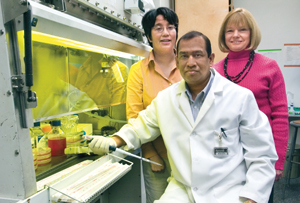 Susan Tsutakawa, Altaf Sarker, and Priscilla Cooper were members of the Life Sciences Division team that discovered crucial steps of transcription-coupled repair.
Susan Tsutakawa, Altaf Sarker, and Priscilla Cooper were members of the Life Sciences Division team that discovered crucial steps of transcription-coupled repair.
DNA is constantly under attack from sources inside and outside the body, including ultraviolet radiation and free radicals in cellular metabolism. Meanwhile DNA repair mechanisms frantically excise and replace defective nucleotides, reconnect broken strands, and patch up other damage. Among these mechanisms, transcription-coupled repair is unique. It targets problems with the active transcription of genes into messenger RNA.
TCR was discovered when scientists compared cells from patients with Cockayne Syndrome (CS) and xeroderma pigmentosum (XP), two different hereditary diseases with a common feature: both entail extreme sensitivity to sunlight.
When XP patients are exposed to sunlight, multiple skin cancers follow, although carefully shielded sufferers can lead seemingly normal lives. XP results from mutations in any one of seven genes, labeled XPA through XPG, mutations that cause failure of global DNA repair mechanisms that address ultraviolet damage throughout the genome.
Cockayne Syndrome is marked not by cancer but by severe physical and mental retardation. Wasting usually begins in the first year, with sufferers looking increasingly aged; average life expectancy is 12 years. CS usually results from mutations in one of two genes, CSA or CSB. Mutations in three XP-associated genes — XPB, XPD, and XPG — also cause clinical CS. Global repair mechanisms remain intact, but transcription-coupled repair malfunctions, affecting only active genes.
When transcription fails
Genes are copied into messenger RNA by a complex molecular machine known as RNA polymerase II (RNAPII). RNAPII works by separating the two strands of the DNA helix, opening what’s called a “transcription bubble” and enclosing it under a component known as a clamp module. The polymerase moves along the strand to be transcribed like an engine along a cog railway, copying the genetic information and assembling messenger RNA as it goes.
 During gene transcription a molecular machine called RNA polymerase II (RNAPII) opens a "transcription bubble" in DNA, reads the genetic information, and copies it into RNA. Most of the bubble is inside the RNAPII (the overlying "clamp module" is translucent in this depiction). If the RNAPII stalls during transcription, the transcription-coupled repair process must somehow gain access to the transcription bubble. (Courtesy Susan Tsutakawa)
During gene transcription a molecular machine called RNA polymerase II (RNAPII) opens a "transcription bubble" in DNA, reads the genetic information, and copies it into RNA. Most of the bubble is inside the RNAPII (the overlying "clamp module" is translucent in this depiction). If the RNAPII stalls during transcription, the transcription-coupled repair process must somehow gain access to the transcription bubble. (Courtesy Susan Tsutakawa)
As the RNAPII engine trundles along, it sometimes encounters a damaged nucleotide or other obstacle, like a highly repetitive sequence with folding of the DNA upon itself. Unable to continue copying, RNAPII grinds to a halt. Normally TCR removes the damage and allows transcription to recover; in Cockayne Syndrome, however, transcription cannot resume, and the affected cells die.
“To find out whether the problem was inability to deal with damaged DNA or a subtle defect in general transcription,” Cooper says, “we first needed to know how stalled RNAPII is recognized.”
Clues pointed to two proteins. The protein CSB was known to respond to stalled RNAPII, and mutated CSB causes Cockayne Syndrome. Mutations of the gene for another protein, XPG, can result in profound Cockayne Syndrome and very early death. Through an ingenious series of biochemical experiments, Cooper and her colleagues found evidence that XPG and CSB must work together in recognizing stalled RNAPII.
“We think that even if CSB is present, if the cell is missing XPG, the CSB won’t work as effectively,” says Cooper. The proteins recognize stalled RNAPII whether or not there is damage to DNA — suggesting that failure of the transcription process itself is at the root of CS.
Fixing the machinery
After a stall is recognized, one of several things must happen. Most theories assume that the stalled RNAPII is degraded and removed so the lesion can be repaired, after which transcription starts over. Other possibilities are that the stalled RNAPII is somehow made to restart, bypassing the lesion, or that it is made to back up, digesting some of the messenger RNA it has already made, and have another go at transcription. Either way the likelihood of errors increases.
What Cooper and her colleagues found was a different, unexpected path. Instead of being removed, the stalled RNAPII may be left in place and remodeled by TCR’s protein machinery.
“This new mechanism means that transcription-coupled repair is much more efficient than other processes for resolving stalled transcription,” says Cooper. “Since it can operate with RNAPII still in place, transcription to that point is not lost.”
XPG’s function is to cut a specific site on the damaged DNA strand. But this site is under the clamp module, which has closed over the open DNA strands. Another protein machine, Transcription Factor IIH (TFIIH), allows XPG to cut the strand at the appropriate place without removing the stalled RNAPII; apparently the TFIIH lifts the clamp module out of the way.
TFIIH does not recognize stalled RNAPII on its own; CSB or XPG are needed to recruit TFIIH, and it’s likely they do this more efficiently working together.
“Remodeling would thus be the pathway of choice, with alternative methods available in a pinch,” Cooper says. “Only if all else fails would the RNAPII be destroyed, forcing transcription to start fresh.”
By illuminating the transcription-coupled repair at the molecular level, Cooper and her colleagues have illuminated the underlying cause of the transcription defects that accumulate after birth in Cockayne Syn-drome. Further work may provide insight into the aging process itself.
“Recognition of RNA polymerase II and transcription bubbles by XPG, CSB, and TFIIH: insights for transcription-coupled repair and Cockayne Syndrome,” by Altaf Sarker, Susan Tsutakawa, Seth Kostek, Cliff Ng, David Shin, Marian Peris, Eric Campeau, John Tainer, Eva Nogales, and Priscilla Cooper, appeared in the October 28 issue of Molecular Cell.
Need to Improve Your Job Skills? Call the New Berkeley Lab Institute (BLI)
There’s a new acronym at the Lab, and those who value professional training and skills improvement will want to learn it now. BLI — as in Berkeley Lab Institute — debuts on Nov. 30 with a new location and a hefty assortment of classes (most of them free) for scientific and operations management, supervisors, and staff.
An outgrowth of the popular ASD Academy, BLI extends the range of offerings from largely administrative into supervisor/manager and leadership development courses, communications skills workshops, administrative software skills development and practice, and work and life how-to’s.
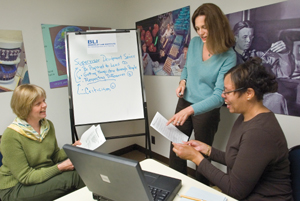 Left to right, Sherri Harding, Karen Ramorino, and Karen Paris of Berkeley Lab Institute
Left to right, Sherri Harding, Karen Ramorino, and Karen Paris of Berkeley Lab Institute
Much of the credit for the Institute’s evolution belongs to Karen Ramorino, a six-year Lab veteran in the human resources and administrative services (ASD) departments and the founder of the ASD Academy in 2003. She and the Academy filled a void — 2,350 attendees took some 80 courses, and most surprisingly, 890 of those participants were from outside of ASD.
“We had more than 100 people help us to create those classes,” Ramorino recalls. “There was clearly an interest beyond just ASD. We had scientists and managers attending the operations how-to classes and the Franklin Covey leadership courses. We were catering to the specific knowledge and competencies that people needed to be successful here.”
Chief Operating Officer David McGraw was aware of this apparent thirst for education, and of Lab Director Steve Chu’s ambitious strategic agenda. He also knew that the Laboratory’s new management contract with the University of California and the Department of Energy included a commitment to increase management training. So he commissioned Ramorino to pursue a more ambitious and broadened Academy model.
She articulated BLI’s three goals: to provide essential information for managing and working at the Labor-atory; to facilitate learning and dialogue among Laboratory employees from across divisions and functions about competencies we need to exhibit as leaders, supervisors and employees; and to provide information on leadership, management and communications programs conducted by experts throughout the UC system and from other higher learning institutions.
The success of BLI, the institute manager says, will be what we make it. “If people participate in the courses and discussions, we will learn from the experience and from each other. That’s what we learned from the Academy. We value our colleague’s knowledge and ideas,” she added. That means BLI’s success depends on Lab employees suggesting topics on things they need to know, and teaching classes in areas where they are subject matter experts, as well as enrolling and participating in the courses. Creating classes internally, says Ramorino, preserves Division training funds to supplement only in areas where there is no internal expertise. “It’s a more efficient use of training funds and it gives some fun and interesting developmental opportunities to those who contribute and participate.”
The BLI program will be housed in a portion of Building 4, one of the original “ Old Town” structures just above the ALS. Ramorino is joined there by Sherri Harding, another HR veteran who is heading the supervisor development series and the work-and-life series, and Karen Paris, the institute’s administrator and teacher of the administrative software skills workshops. They have created a library of leadership, management, communications and career development books and training DVD’s, and they’ve spruced up a 10-person conference room with inspiring photos of Lab people doing great science. Four training computers for individual practice are also available at the Institute.
Ramorino is currently making her way through Divisions delivering a new class that was developed by a number of subject matter experts at the Lab, “Introduction to Roles and Accountabilities of Managers,” which COO McGraw says will be a welcome addition to the portfolio.
“In most good organizations, there is some training common to every manager, a common knowledge base. It brings stability and an accepted set of expectations and understandings,” McGraw said.
And if you don’t find what you need at BLI, then the BLI staff will help you find it, either through off-site offerings or within the Univer-sity of California campus system. Or, they will develop a course to address particular topics, finding subject matter experts either here or through outside organizations. Managers and employees can work with BLI staff on developmental plans and/or courses to fit their Division or group needs.
So, whether it’s a new supervisor trying to figure out the full scope of fundamental compliance and regulatory requirements, or a team trying to improve its project execution, or it’s a post doc seeking help in the fundamentals of technical presentations, or an employee needing assistance with certain software functions – BLI is the place to go. The web site (www.lbl.gov/BLI) is one-stop shopping for onsite and offsite training options, including links to Division training in specialized areas such as EH&S and Finance.
Ramorino and her staff will be serving up information and refreshments on Wednesday, Nov. 30, from 8 a.m. to 5 p.m. Employees are encouraged to stop by (Bus Stop #9) and find out about the resources available to them.
Ramorino Applies Ph.D. to New Role as BLI Director
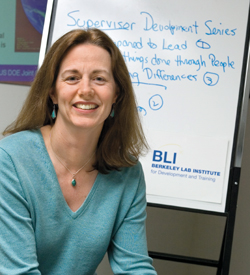
Karen Ramorino’s interest in adult education extends beyond her job at Berkeley Lab. She recently completed a doctorate in education from the University of San Francisco. In her off hours, she continues her research on women and their work contributions in science and technology development in developing countries. She is currently working on two peer-reviewed articles on her research and plans to present a paper at a national conference in the spring.
So far she has met with women in Jamaica, Laos, and Thailand. “Many of the barriers women encounter in their development work are more social-cultural in nature, and not with the science or technology per se,” says Ramorino. “Education and continuous adult learning are foundational to their national building process particularly given the historical legacies they are trying to break through.”
Ramorino felt fortunate to be able to apply what she learned in her graduate studies in her building of the ASD Academy and now the Berkeley Lab Institute. “There’s nothing more interesting and exciting than working in a creative and thoughtful environment where our contributions make a difference,” says Ramorino. “I hope my efforts here will contribute toward that kind of work environment.”
Class Listing
Manager and Supervisor Development
(no cost for attendance)
- Roles and Accountabilities for Managers and Supervisors
- Be Prepared to Lead
- Getting Things Done Through People
- Criticism: Giving and Taking
- Coaching with Confidence
- Presentation Skills
- Interpersonal Communication Skills
Leadership Development
- 7 Habits
- 4 Roles of Leadership
- Writing Advantage
- 4 Disciplines of Strategic Execution (for teams)
Work and Life How-To’s
- eRoom Basics
- Tuition Reimbursement
- Foreign Visitors
- Calendar Tips and Tricks
- eRoom Advanced
- Oracle Calendar
Scientific and Technical Professional
- Post Doc / Graduate Student Training Series (in development)
- Transferring Technology to the Marketplace Development Initiative (in development)
Administrative Staff Development
- Online learning program, Skillsoft
- One-on-one assistance with Word, Excel and Powerpoint functions
BLI Resources
- Professional Development Library
- Practice Computers
- BLI Website
Enhanced Emergency Phone Alert System Pinpoints Location to Improve Response Time
As of December 1, Berkeley Lab employees can rest easier knowing that responses to emergencies will be faster and more precise, saving precious seconds and minutes that could be the difference between life and death.
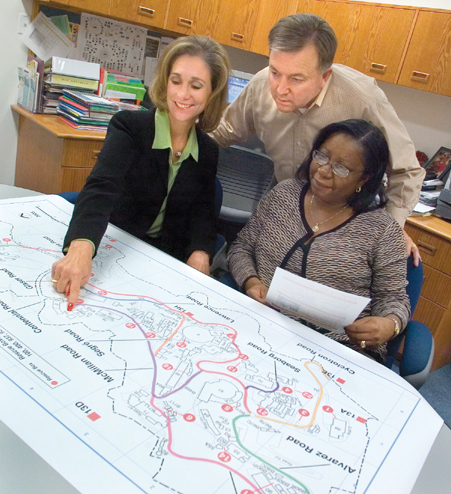 Scanning the new E-911 emergency phone system site map are (from left) Cindy Wood, Dan Lunsford and Linda Smith.
Scanning the new E-911 emergency phone system site map are (from left) Cindy Wood, Dan Lunsford and Linda Smith.
It’s all because of the activation of a new phone alert system called “E-911,” or enhanced 9-1-1 service. What it means is that a call to the emergency numbers — 7911, 911, or 9911 — will be received and instantly located for emergency responders, by building and office number. Up until then, all emergency calls on the hill went to the dispatcher as being from “ One Cyclotron Road,” the Lab’s institutional street address. The exact location would have to emerge from the conversation or through a directory search.
Under the new system, a call from, say, an office or lab in Building 84 will instantly flash the location on computer screens at four terminal locations on site, including the Blackberry (main) security gate and the Fire House. At least one fire truck will be dispatched immediately to the location, and off-site personnel responding to the call will know exactly where to go.
“It provides emergency response in a timelier fashion,” said Information Technologies’ (IT) Cindy Wood of the Telephone Service Center, who has been working to add this electronic automated system at the Lab since 2001. “For a large place like this with multiple locations, knowing the exact street, building and room number is extremely important to get aid to the scene as rapidly as possible.”
A collaboration between IT, Environment, Health and Safety (EH&S), and Facilities, E-911 involved a broad integration of databases and personal verification of every telephone at the lab. That’s over 5,000 telephones. Database updates are sent from Telecommunications every morning and every evening to ensure accuracy. The team included IT’s Sandy Merola, Linda Smith, and Wood; Lab Security’s Dan Lunsford, Valerie Lucas, Jim Breckinridge and Gary Piermattei; and Facilities’ Laura Chen and Paul Franke.
Here’s how it works. When someone makes a call to 911, it is answered by a dispatcher at the Alameda County Fire Department in Livermore, Berkeley Lab’s partner in emergency response. If the call is from the Berkeley Lab main site, “emergency call” is flashed on the screens of four monitors – at the Blackberry gate, Building 48 (the Fire House), Building 90 (parking and security manager Breckinridge) and Building 26 (the medical facility). Main gate security will then direct emergency personnel to the caller’s location. In almost all cases, an Alameda County fire truck will be sent to the location from the Lab Fire House.
Depending upon the nature of the emergency, dispatchers will summon police, fire, paramedics, and toxic clean-up personnel. Their job of locating the problem has been made much easier. It even pinpoints the location within complex buildings, like which beamline at the Advanced Light Source.
“It is most important,” said Wood, “that lab employees who move offices or phones follow the procedures for informing Facilities and/or Telephone Services about the move. That way we can be sure that our database is updated and our emergency response system is current.”
All Berkeley Lab’s off-site buildings will now go to the appropriate Public Safety Answering Points. For example, the public safety answering point for the Oakland Scientific Facility is the Oakland Police Department. In all cases, location ID is instantaneous and shared with all responders.
On the system’s inaugural day Dec. 1, its coordinators will be on hand in the cafeteria to provide demonstrations and answer questions from employees. They will set up next to the coffee bar and use the plasma screen to illustrate the service. Visitors are welcome from 11:30 a.m. to 1:30 p.m. For more information, visit http://tscweb.lbl.gov/projects_pilots/e911.html.
People, Awards, and Honors
Lab Scientists Join AAAS as Fellows
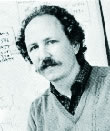
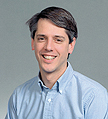
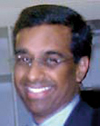
Among the 376 selected for this year’s crop of fellows for the American Association for the Advancement of Science are (from left to right) David Wemmer, (Physical Biosciences), Roger Falcone (Advanced Light Source), and Ramamoorthy Ramesh (Materials Sciences). Also named: Suzannah Lewis (guest in Life Sciences, not pictured). Fellows are recognized for the outstanding contributions to their fields.
 Lab, Fetzer Winery Get ‘Flex Your Power’ Award
Lab, Fetzer Winery Get ‘Flex Your Power’ Award
Flex Your Power, California’s energy efficiency campaign, recognized Berkeley Lab and Fetzer Winery as leaders in energy efficiency with a 2005 Flex Your Power Award. The Lab and Fetzer Winery were highlighted for developing an easy-to-use, computer-based tool and a handbook to help California’s wineries reduce energy and water costs.
Lambertson, Hellman, Zettl Winners of APS Awards
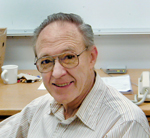
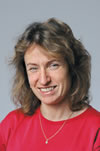
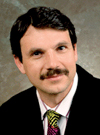
The American Physical Society has bestowed the Robert R. Wilson Prize to (left to right) Glen Lambertson (Center for Beam Physics); the Joeseph F. Keithley Award to materials scientist Frances Hellman; and the James C. McGroddy Prize to materials scientist Alex Zettl.
 Physicist Zumino Wins Italy�s Fermi Prize
Physicist Zumino Wins Italy�s Fermi Prize
Bruno Zumino, a guest in the Physics Division, has been named winner of the 2005 Enrico Fermi Prize, given annually by the Italian Physical Society. The prize is shared with Sergio Ferrara and Gabriele Veneziano of CERN, for “contributions to the development of the modern theory of gravity.”
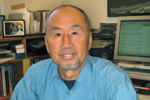 Structural Biologist Kim Is Pitt Alumni �Laureate�
Structural Biologist Kim Is Pitt Alumni �Laureate�
Sung-Ho Kim of the Physical Biosciences Division is among University of Pittsburgh alumni honored with a Legacy Laureate for “his life-saving scientific discoveries.” Kim is a world authority on structural biology and structural and computational genomics and proteomics. He received the Ph.D. in chemistry from Pitt.
27 Lab Drivers Earn Safe Driving Credits
Lab truck and fleet drivers were honored in the 50th Annual Safe Driver’s Award Program, for not having a preventable vehicle accident in 2004. Honorees include Vill Anabeza, Kathreen Bedford, Sandy Bell, Penny Casteel, Robin Cutt, Malcolm Daniels, Gerard Duncan, J. B. Farr, Troy Foster, Maisha Morris, Gwen Holland, Lynn January, Dean Jones, Stephanie Martinez, Ralph Sallee, Leroy Roger Thomas, Wiley Walters, Frank Wright, Patrick Borden, Shelley Caras, Jon Cleveland, Kevin Haugh, Luster Howard, Robert Kelley, Jim Martinez, Paul Williams, and Charles Benjamin.
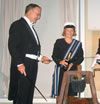 Gray Receives Honorary Doctor of Medicine
Gray Receives Honorary Doctor of Medicine
Life Sciences Division Director and Associate Laboratory Director for Life and Environmental Sciences Joe Gray received an honorary Doctor of Medicine from Finland’s University of Tampere. The doctorate acknowledges his central role in fostering molecular cancer research at the institution, which has led to the establishment of several productive cancer research groups.
Berkeley Lab View
Published twice a month by the Communications Department for the employees and retirees of Berkeley Lab.
Reid Edwards, Public Affairs Department head
Ron Kolb, Communications Department head
EDITOR
Pamela Patterson, 486-4045,
[email protected]
Associate editor
Lyn Hunter, 486-4698
STAFF WRITERS
Lyn Hunter, 486-4698
Dan Krotz, 486-4019
Paul Preuss, 486-6249
Lynn Yarris, 486-5375
CONTRIBUTING WRITERS
Jon Bashor, 486-5849
Allan Chen, 486-4210
David Gilbert, (925) 296-5643
Photography
Roy Kaltschmidt, 486-5731
Creative Services Office
FLEA MARKET
486-5771, [email protected]
DESIGN
Caitlin Youngquist, 486-4020
Creative Services Office
Berkeley Lab
Communications Department
MS 65, One Cyclotron Road, Berkeley CA 94720
(510) 486-5771
Fax: (510) 486-6641
Berkeley Lab is managed by the University of California for the
U.S. Department of Energy.
Online Version
The full text and photographs of each edition of The View, as well as the Currents archive going back to 1994, are published online on the Berkeley Lab website under “Publications” in the A-Z Index. The site allows users to do searches of past articles.
Flea Market
story author/sub-title
- AUTOS & SUPPLIES
- 98 TOYOTA CAMRY LE, auto, ac, am/fm/ cass, black ext & beige int, well mantained, reliable, good cond, 110K mi, $4,500, Radek, X2402, 666-9265
- 95 Honda civic DX coupe w/98 JDM Integra Type R engine, approx 60k mi, asking $4k for whole car, $3k for engine only, Lissa, X5734
- 93 Lexus ES300, Garnet pearl, sunroof, A/T, ABS, alloy wheels, black leather interior, V6 engine, power everything, clean title, no accidents, 2nd owner for the last six mo, 123K mi, great cond in & out, $5,300, Janice, X4943, (925) 323-3341
- 89 Sterling 827, 2.7 liter Acura Legend engine, 110K mi, runs great, $750/bo, Carl, (925) 980-6977
- 00 TOYOTA CAMRY LE V4 auto, 4 door all power, alarm, ac tilt, cruise, cd-tape stereo 144k mi, 1 owner, well maintained $5,595/bo, Anil, X5254
- HOUSING
- ALBANY, furn 2 bdrm condo for sublet, 12/27/05 to 1/23/06, nr shopping centers, Bart station, bus lines, $1,350 incl utility + $1,000 sec dep, minimum 1wk staying will possibly be considered too for $50 per day, Minmin, 847-5130
- BERKELEY HILLS HOUSE, 2 room suite for rent in w/SF Bay views, short walk, quiet setting, 1 bdrm + 2nd adjacent room, which can be used as priv liv room or study, shared kitchen, laundry & storage area, $900/mo, avail 11/1, [email protected]
- BERKELEY HILLS, bay view, lge sunny furn room 17`x15`, priv entr, own bthrm, quiet neighbrhd nr UC/pub trans/shops, cooking facil in adj rm, pool table, workout mach, w&d, $875/mo, incl utils, phone line, wireless DSL, dish satellite, TV/VCR, no smoking/pets, avail from end Nov, Carol,524-6692
- BERKELEY HILLS, perfect for visiting scholars by wk/mo; quiet furn suite 1bdrm/1bth/ livngrm/kitchenette, quiet, elegant & spacious; bay views; DSL, cable; walk to UCB, Kristin, www.bvsuite.com
- BERKELEY, community of scient/staff/grad students, Hearst Commons, nr UC/pub trans/BART, res parking, internet, studio townhouses w/decks, furn can be provided at no cost, hrdwd flrs, skylights, dw, disposals, ac, intercom, sec; $975, 848-5371, website: http://www.live-work.us
- DOWNTOWN BERKELEY, nice room w/priv bthrm in a neat & clean 3bdrm house, 2 LBL employee roommates, walking distance from campus, avail from Jan, $750/mo, 8 mo lease req, [email protected] - pictures, http://galaxus.no-ip.org/henrycourt/
- WEST BERKELEY/short-term rental mo/ wkly, fully furn, 1 mi to UC & close to transit, all util incl, free wireless DSL & on-site laundry, lge backyard & deck, modern w/new appliances, $1,000/mo or $350/wk + neg dep, Andy, 848-6030
- FREE
- WINDOW GLASS, 1/4” thick, flat, but slightly wavy, approx 66-5/8” x 56” Dennis, X7859 or (925) 939-2006
- MISC ITEMS FOR SALE
- EXERCISE RECUMBENT BIKE, NordicTrack SL710, computerized controls & programs, brand new, w/maintenance contract through Feb 2009, $200/bo, Susan,X6507, (707)647-1409
- LOVESEAT, cotton fabric, floral design, very comfortable, $95/bo; Shilag dr knobs, $14/ea, 1 silver, Kwiket dead bolt, $10; brass color helogen flr lamp, $12/bo;silver color based swing arm wall lamp like new, $30; 4 lge dinner plates, quality porcelain, $12, Minmin, 847-5130
- PRINTER, Mac Stylewriter II inkjet, barely used, black ink cartridge, pwr cord & cable, exc cond, works w/ Macs w/ parallel port, no USB, $20/B.O; Mac Keyboard & Mouse, $10; Music Triangle $10; Sony Walkman radio/Cassette, $15; Melissa, 665-5572
- SECTIONAL SOFA & TABLES, (2) daybeds w/trundles; kitchen table w/6 chairs; office desk w/hutch & credenza; Computer desk w/hutch & 2dwr file; Children’s bdrm set corner desk, tall dresser, low dresser w/mirror; Lamps, 2-Stiffel table, brass flr w/glass table, & Tiffany style; Girls bikes-; Patio set, , John, X6357, (925)939-3746
- SKI HELMETS, 2 UVEX, XL & L, 2 years old, $25 ea or $45 for both, Nanyang, 334-9241 (cell)
- TIVO DVR, 1 yr old, 80-hr storage capacity, cost $299, now $100, incl remote, cables, user’s guide, record TV shows digitally, auto, control live TV, Ron, X7586, or (925) 283-8806
- WANTED
- House & pet sitter wanted for Thanksgiving week, in Oakland hills w/bay view, Maurice X7354
- PARIS apartment, 2 bdrms for 4 adults, March 8-20, 2006, Nancy, X7780
- VACATION
- PARIS, FRANCE, near Eiffel Tower, furnished, elegant & sunny 2 bdrm/1bth, apt, avail yr round by week/month, close to food stores, restaurants, car rental, pub trans/shops, 848-1830, [email protected]
Flea Market Policy
Ads are accepted only from Berkeley Lab employees, retirees, and onsite DOE personnel. Only items of your own personal property may be offered for sale.
Submissions must include name, affiliation, extension, and home phone. Ads must be submitted in writing
(e-mail: [email protected], fax: X6641), or mailed/ delivered to Bldg. 65. Email address are included only in housing ads.
Ads run one issue only unless resubmitted, and are repeated only as space permits. The submission deadline for the Dec. 16 issue is Thursday, Dec. 8.
In Memoriam
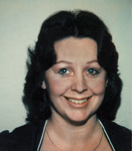
Bonnie Rene Vetro, a former print room operator in the Lab’s Engineering Division, died on September 14. She was 61. Vetro worked at the Lab from 1981-1986. Among the many things she was remembered for by colleagues was her quick wit and sense of humor, her distinction at the age 16 of taking first place in a roller-skating marathon by skating a record-setting 51 miles in less than 9 hours, and her devotion to her church and her family. She is survived by her husband, Sam, and her three children, Daniel Fuller, Cynthia Zerlin, and Joey Fuller, as well as three grandchildren. Services were held in September.